The Environment: If you have multiple dogs, a kennel setup is something to seriously consider. It will
enable you to have a place at home to keep your pets where they are secure, healthy
and can feel comfortable in. You can leave them there while you are away at work and
they can romp, get fresh air and defecate. You can keep the area clean and pest free
through proper management. It is easier to find someone to pet sit for you if you have
a kennel set up because it is easier for them to come in and take care of everyone.
If you are raising puppies or have a stud dog who may have bitches visiting, a secure
kennel is important to their health and happiness.
My first introduction to "kennels" was not a positive one. In my twenty or so years
around dogs and dog people, I have had the opportunity to visit many kennels, Kees,
Collies, Shelties, etc. There are some I have visited and obtained good ideas from in
future planning. Many kennels are not pretty sights. They stink, they are an eyesore
and many look unsanitary. That does not have to be the case and should not be the
norm. As breeders of quality kees, we should think about the impression our home
and dog areas have upon folks that come to visit, come to purchase a puppy or adopt a
rescue dog. We should set an example and not be talked about as "that dog house". I
am not saying that my setup is perfect and that my home is always in order, but I have
had compliments that it is one of the best set ups for the dogs and there are not
tumbleweeds of dog hair in the corners of my home. To introduce the kennel idea, I will explain my kennel set up as there are many
styles to suit different needs and areas of the country. I am very proud of my kennel
as it is a showcase for us as well as being a healthy and secure place for our dogs. It
has made our life easier and allows us the freedom to stash our dogs without them
having to be inconvenienced or uncomfortable.
I had my first kennel in Ohio around 1985. I put up most of the fencing myself. My
brother-in-law, Jeff Woods, designed and built the inside. Our current kennel in
Maryland was based upon this design, however, it needed many new innovations
because it is on the side of a mountain where nothing is level and there is much stone
beneath the surface. My husband, Lem, designed this kennel so it would be level. It
took 40 tons of dirt and a lot of sweat to get it right. His ideas along with tips I had
received during the years from talking with other folks who have kennels went into the
design.
The outside runs are 6' high and 6'x18' chain link panels. The runs are completely
under a wooden roof structure (uses 6"x6" wood beams for supports) with metal
finishing to keep snow, rain, ticks and sticks out. There are full length gates on each
run for easy access. We keep snap clips on each door latch in case a cleaver kees
learns to pop the latch by jumping up. (That has happened.) For summer when
the sun tends to intrude into the runs, we have three foot wide roll down shades to
provide protection. Kees coats can turn red if bleached by the sun, so the shades are helpful to prevent this. There is a light above each outside kennel run as well as lights
inside the building. Both sets are turned on by light switches. The two outdoor flood
lights are on timers that go from dark to midnight. In addition to the above, we used landscaping timbers as outlines to each outside
run. They are built up so each run is on level ground. The inside of the timbers
(stacked 12 high in places, are notched for stability) are filled with dirt. Turkey wire is
laid next to prevent diggers from mixing dirt & gravel. I found that to be a problem with
my first kennel. Kees love to dig and will eventually get to the dirt layer. Things
become messy then. That is followed by 8" of limestone gravel and topped off with 6"
of rolled pea gravel. Limestone gravel is good to wash stuff into because it is a natural
scent diffuser. The importance of a good layer of gravel is key to keeping worms under
control. If you show dogs or have other dogs visit your kennel, you will inevitably get
worms. You can disinfect and hose down gravel very easily and keep worms away
from your dogs foot pads to prevent reinfestation. I use Lysol cleaner and Quatricide
for disinfecting. I use a power nosel to wash away stuff after scooping. I like to
disinfect about once a week. If you have bitches in heat, hosing the run down will keep
the scents under control. Every quarter or so, a run is "retired" and limestone powder (the sweet kind, also known as Garden Lime)
is spread over it for a week. This helps break down organic matter and diffuse smells.
In each run, there is usually only one dog at a time, two sometimes. Scooping once
or twice a day is done with the scoops being put in a large rubber trashcan that is
dumped every few weeks into a hole and filled over. In talking to others that have a
kennel set up, we often ask what is done with the fecal matter. Many put it in a plastic
bag and it goes out with the trash. I guess this would be ok if you have one or two
dogs, but more that and the trash collectors may not take it. I have used a "pit" at my
old place in Ohio, but the ground was low and when it rained... well it wasn't a pretty or
sanitary sight. We have three acres and can find places "in the back" to dig up as
disposal areas. Lime powder expedites the breakdown process. For exercise and security from other animals, our kennel is situated in the middle of
a 1/4 acre of fenced area. We call this the "dog compound". There is one main
gate. The dog compound has many fun areas for kees to explore. We have boulders and
timbers around as well as a large open area for serious romping. Because of this and
the slope, our dogs have great muscle tone. It shows in their ability to leap high,
perform agility, lasting endurance and deliver healthy puppies in no time flat. Muscle
tone is important to keep other organs and bones in good working order. It also keeps
our old guy and gals young and in good shape to live longer. Socialization is another important aspect of the dog compound. In it, we mix
various personalities and ages. There is a pack instinct that is a natural part of the
interaction. It is important to allow the dogs to find their rung in the pack. It is good for
their overall mental attitude and "doggy relations". Little or no interaction from us is
usually needed for everyone to find their spot. It is interesting to watch. Our kennel is in the woods but there are several sunny spots even during peak tree
leaf time. Even though some sunshine is a good source of Vitamin A, too much will turn
a kees coat red and brittle. In the early spring when the trees and bushes haven't grown out yet, we use rollup blinds on the gates to each dog run to keep the runs shadey. The temperature stays very cool in the shade of the trees during most of
the summer. In the hot summer, we only let the dogs run in the very late evening. We have fans on each run inside to help circulate the air and provide a more cooling effect. In
the winter, if the temperature falls below zero, we bring the dogs in the house.
Otherwise, we keep those who are being conditioned for show outside to grow nice,
plush coats. Jerking them from a 70 degree house back and forth to 20-40 degree
weather is not healthy. Several years ago, we invested in "Canine Canteen" water buckets.
They hold 5 gallons of water and keep it from freezing but at a nice temperature for
drinking. They are electric and plug in but have about 3 feet of protected wire that can
be woven up and out of reach of knawers into chain link. They cost about $80 each,
but the investment was well worth it. The dogs now have good, clean, unfrozen spring
water all year long. [These buckets are available via catalogs; see the Reference section.] In addition to the functionality of a kennel, we also landscape the outside to make it
more appealing as well as functional. The use of plants around the kennel
make it more pleasing to our eyes and healthier for the dogs. We planted garlic,
marigolds, (various) mint and boxwood around the dog compound. The plants are
suppose to discourage pests and they are ornamental. In the spring, tulips, daffodils, windflowers, various mints and marigolds decorate the perimeter.
I hope the explanations of our set up has given you ideas for planning or improving
your own in a more natural way. Care of the dogs was covered in preceding topics of MNR, however, some
generalities will be touched on. It is very important to establish a relationship with a
good veterinarian. When I lived in Ohio, I eventually ended up with two excellent vets.
It was hard to leave them seven years ago when I moved to Maryland, but it was even
more difficult to find replacements. After about three years of trying and not being
satisfied with vets, we finally found an excellent clinic. Our vets are a married couple,
Randy Barbour
and Michelle McKenna who both graduated from Virginia Tech Vet school. Their clinic
is right next door to their home, which is an important feature when you need
emergency help. They understand breeders and the trials & tribulations of working with
purebreeds. They are up to date on some of the leading edge news and facts.
Michelle's mother shows Gordon Setters and so she was raised with the environment.
We are thankful for having found them and our relationship is one of trust.
Prevention is important using a good dog food along with a vitamin and herb
supplement that is tailored to your dog lifestyle and needs. (These topics were covered
in previous articles.) Be careful with the overuse of drugs. They should be used only
with consultation with your vet. The use of cortisone for common ailments such as skin
allergies is becoming more and more common. Avoid them if possible because they
suppress the immune system. There are other avenues. Try using more natural,
slower working methods, most of which are preventative.
If your dog does develop a life-threatening problem where massive surgery is
suggested, you must weigh that along with the chances of a quality life. Sometimes
vets are overly optimistic or they don't explain the best and worse case. Life at any cost
and heroics are not the answer. Choices made in these situations sometimes result in
your kees having a (much) less than ideal quality of life. Many an owner has had to
make the fateful decision of euthanasia after one or two such surgeries and much pain
for the pet, not to mention the strain on the family and pocket book. If you have a vet
you can trust who will level with you, the decisions will be easier and better for
everyone involved. Unless your dog has an illness that requires intensive care you cannot give at
home, it is best to treat your dog at home. This is assuming you have a crate, because
most illnesses require rest and quiet. This can only be achieved successfully with the
use of a crate. There have been times in the past that I thought I could not do things
like giving shots, but I learned to because my dog needed such care to live. When
your pet needs it, you will forget about your queasy stomach, about your quirks and you
will do what is necessary. That is just the way it is. If you have found a good
veterinarian, you will be able to work with them on a schedule that will have your dog
on the road to a quick recovery.
Many liver and kidney failure cases are due to the toxic effects of food and the
environment. You can help alleviate some of this through a good health program that
includes Vitamin C. Diseases of the heart and circulatory system can also be kept to a
minimum with the same and the use of garlic and proper exercise. Keeping your dog in
good physical shape is important for long life. Nutrition and feeding were covered in previous articles, geared towards each type
of dog. To
review in general terms, important points are to keep your dog on a schedule of
feeding. For an average dog in good health, one meal a day is best for the optimum
utilization of food. The meal should be given at approximately the same time each day.
What is not eaten in thirty minutes should be taken away until the next day.
A good quality meat based food with natural preservatives is best. Recipes for dog
stew, cupcakes and crunchies were contained in previous articles as well as book
suggestions for more recipes. The best scenario is to cook for your dog, but most
people don't have the time to do this if they have multiple pets and work. What I use is
Natural Life Condition formula mixed with at least one other good quality food
(rotated) such as Natures Recipe. I don't use lamb based foods. I cook and then
freeze A*starz Dog Stew and cupcakes to keep on hand during the month. These are
added to the dry food and vitamin & herbal supplements. Puppies are raised on mostly
homemade foods and Precise Puppy formula. Older puppies and special care dogs get
1/2 their meals as Chipper's Favorite Cupcakes (recipes in JabberwocKEES
magazine). [Recipes are also in the section.]
For those of you who are vegetarians, do not expect your dog to do well on a
vegetarian diet for any length of time. Dogs are carnivores and require meat in their
diet. They cannot be healthy and happy on such a diet.
Keeshonds should be allowed to each grass when they want and some will even
eat dirt. This is ok as they are attempting to add minerals and greens to their diet.
Some will eat sticks but not all the ones they chew have medicinal value.
The idea behind "Modern Natural Rearing" is to be able to produce healthier, solid
(mind & body) kees over time. It will not be in our lifetime ... it will take generations. I
am not doing all I could do as it takes time to get on a program, but I am doing what I
can within the limits of my lifestyle. If we, as concerned futuristic-Kees folks, do what
we can, the future of our breed will be more assured. Are you short term or long term?
Are you part of the future or a contributor to the demise of the breed? If we don't
get a group of serious folks to participate, our breed will suffer. I have been seeking
out folks with similar concerns who want to make a difference. There will come a day
when serious kees folk will only breed and obtain dogs from others who have a holistic
approach. It is already starting to happen. I am excited about the future of our breed in
that respect. Residing in the Washington D.C. area, we have been fortunate to have
kees-fancier visitors stop by. We have entertained friends from different parts of the
country and world. We invite any of our kees friends who are traveling far from home to visit us.
Click here to return to topics list.
![]()
Topics covered are:
![]() Kennel Environment
Kennel Environment
![]() A Kennel
A Kennel
![]() Kennel Construction
Kennel Construction
![]() Kennel Exercise
Kennel Exercise
![]() Kennel Socializing
Kennel Socializing
![]() Kennel Care throught the
Seasons
Kennel Care throught the
Seasons
![]() Landscaping
Landscaping
![]() Dog Care
Dog Care
![]() Nutrition
Nutrition
![]() The Future: Modern Natural
Rearing
The Future: Modern Natural
Rearing
![]() Invitation
Invitation
![]()
Kennel Environment
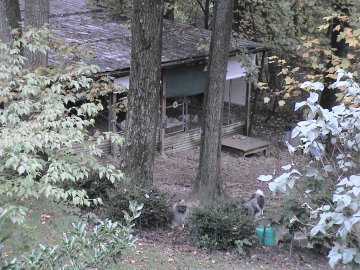 Although we have a kennel, all our
dogs are raised in the home and crate trained. We rotate everyone so they all get
some house time, but we rarely have all five dogs in at one time. (Our personal dog
limit is five.)
Although we have a kennel, all our
dogs are raised in the home and crate trained. We rotate everyone so they all get
some house time, but we rarely have all five dogs in at one time. (Our personal dog
limit is five.)
Click here to return to topics list.
![]() A Kennel
A Kennel
Click here to return to topics list.
![]()
Kennel Construction
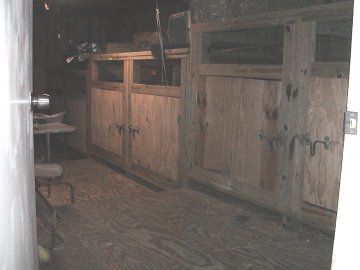 Our kennel is located within earshot and view of our master bedroom and deck.
(No, our dogs are not debarked, we like their voices but they are semi-trained
to be quiet!) The building is 12'x24'. It is not heated or air conditioned and we don't
have plumbing in it. There is an area for grooming and storing crates, x-
pens, etc. It has four indoor/outdoor runs and four inside-only boxes. All inside boxes
are 3'x3' with removable floors raised off the ground about 6". This keeps the dogs
from having drafty floors to sleep on. The dividers are turkey wire (2"x4" square mesh
fencing) with wood (2"x4" pieces) and tops that are covered and hinged. The front
doors are solid wood with horse stable latches. I use Johnson Pet Doors, large size
flexible rubber, for the indoor/outdoor openings.
Our kennel is located within earshot and view of our master bedroom and deck.
(No, our dogs are not debarked, we like their voices but they are semi-trained
to be quiet!) The building is 12'x24'. It is not heated or air conditioned and we don't
have plumbing in it. There is an area for grooming and storing crates, x-
pens, etc. It has four indoor/outdoor runs and four inside-only boxes. All inside boxes
are 3'x3' with removable floors raised off the ground about 6". This keeps the dogs
from having drafty floors to sleep on. The dividers are turkey wire (2"x4" square mesh
fencing) with wood (2"x4" pieces) and tops that are covered and hinged. The front
doors are solid wood with horse stable latches. I use Johnson Pet Doors, large size
flexible rubber, for the indoor/outdoor openings.

To maintain the inside, I use a
shop vacuum several times during major cleaning. This picks up cobwebs, critters, flea eggs that may have been carried in and dog hair from accumulating. I wash all the bedding periodically (more often in summer time). If I do have a potential pest problem, diatamcious earth can be sprinkled around to kill fleas and ticks. It is not a chemical and is safe around dogs. Using citronella, penny royal, eucalyptus oils in a water base sprayer can also add to repelling pests in a natural way.
 There is a radio inside the
building that is on a timer from approx 7am-midnight. It serves two purposes: 1) so the
dogs can hear noise and voices 2) so would-be intruders think someone is inside.
During the winter, we add nice, thick bedding. In the summer, there is nothing down
except a light bedding. I have recently discontinued the use of cedar chips because
they have such a strong odor and most dogs are allergic to them.
There is a radio inside the
building that is on a timer from approx 7am-midnight. It serves two purposes: 1) so the
dogs can hear noise and voices 2) so would-be intruders think someone is inside.
During the winter, we add nice, thick bedding. In the summer, there is nothing down
except a light bedding. I have recently discontinued the use of cedar chips because
they have such a strong odor and most dogs are allergic to them.
Click here to return to topics list.
![]()
Kennel Exercise
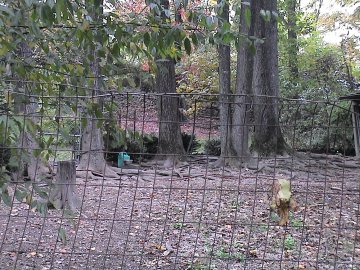 Since we are on a sloping mountain, we could not fence flush with the ground. We
used boulder, stones and timber to fill in the "holes". The compound has been secure
after the first year or two. It required some expert escape artists (mainly Lexy & Ketta)
to show us the areas we had not known were a problem. Our dogs are only allowed in
the compound when we are home. This is a security measure in case a clever kees
finds a new opening! The compound does have some grass, but is mostly hard packed
dirt and stone. It drains very well even after major downpours. We keep the grass
clipped short with just enough clumps left for the kees to munch on. We also keep the
low tree branches trimmed. Sometimes we have to spray liquid Sevin during pest
season. These measures keep ticks and fleas from becoming too comfortable. When
we have a bitch in heat, she is only let out on lead to exercise outside the compound.
Keeping her in a run within the compound keeps her secure from stray dogs. The
"bitch in heat" run is the last run, the highest elevated from the ground. The "stud dog
run" is the lowest, opposite the bitch run and is downwind from it.
Since we are on a sloping mountain, we could not fence flush with the ground. We
used boulder, stones and timber to fill in the "holes". The compound has been secure
after the first year or two. It required some expert escape artists (mainly Lexy & Ketta)
to show us the areas we had not known were a problem. Our dogs are only allowed in
the compound when we are home. This is a security measure in case a clever kees
finds a new opening! The compound does have some grass, but is mostly hard packed
dirt and stone. It drains very well even after major downpours. We keep the grass
clipped short with just enough clumps left for the kees to munch on. We also keep the
low tree branches trimmed. Sometimes we have to spray liquid Sevin during pest
season. These measures keep ticks and fleas from becoming too comfortable. When
we have a bitch in heat, she is only let out on lead to exercise outside the compound.
Keeping her in a run within the compound keeps her secure from stray dogs. The
"bitch in heat" run is the last run, the highest elevated from the ground. The "stud dog
run" is the lowest, opposite the bitch run and is downwind from it.
Click here to return to topics list.
![]()
Kennel Socializing
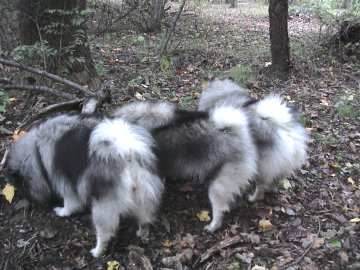 When we sit
for other dogs or temporarily add a rescue dog, we monitor the pack carefully as the
new dog finds its place. Dogs need interaction with one another (as well as with
people) to keep their minds stable. Just think what the world would be like if you were
the only human in the midst of other creatures or if you were not allowed to mix with
other humans.
When we sit
for other dogs or temporarily add a rescue dog, we monitor the pack carefully as the
new dog finds its place. Dogs need interaction with one another (as well as with
people) to keep their minds stable. Just think what the world would be like if you were
the only human in the midst of other creatures or if you were not allowed to mix with
other humans.
Click here to return to topics list.
![]()
Kennel Care through the Seasons
Click here to return to topics list.
![]()
Landscaping

Click here to return to topics list.
![]()
Dog Care
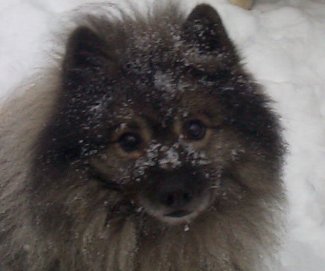 If the choice is to euthanize, the best thing you can do is to be
there when it happens, to say goodbye to your pet who loved you and trusted you to
act in his best interest.
If the choice is to euthanize, the best thing you can do is to be
there when it happens, to say goodbye to your pet who loved you and trusted you to
act in his best interest.
Click here to return to topics list.
![]()
Nutrition
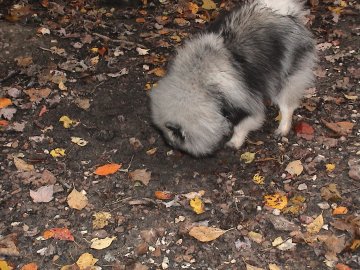
Click here to return to topics list.
![]()
The Future
Click here to return to topics list.
![]()
Invitation
![]()
